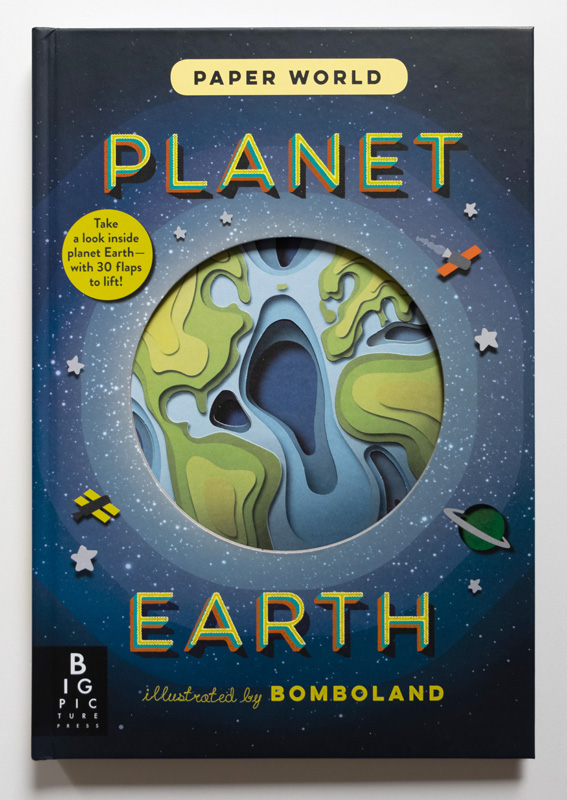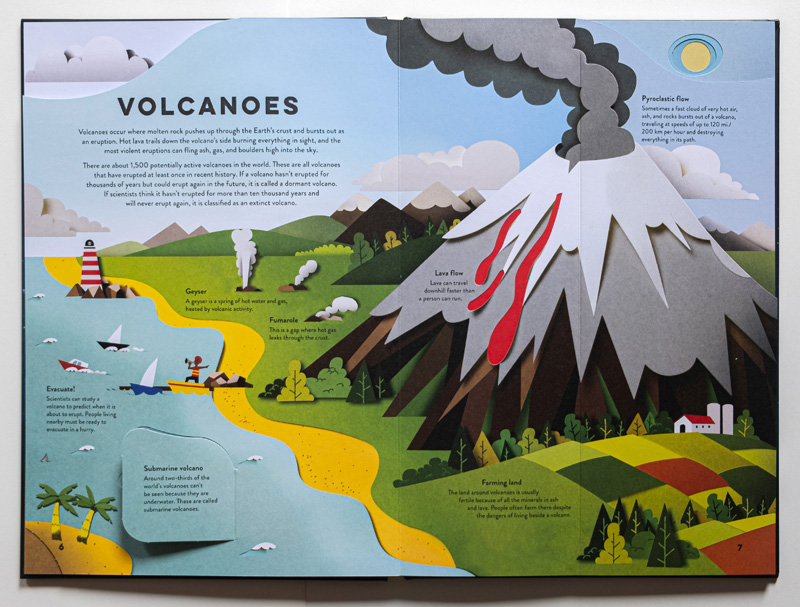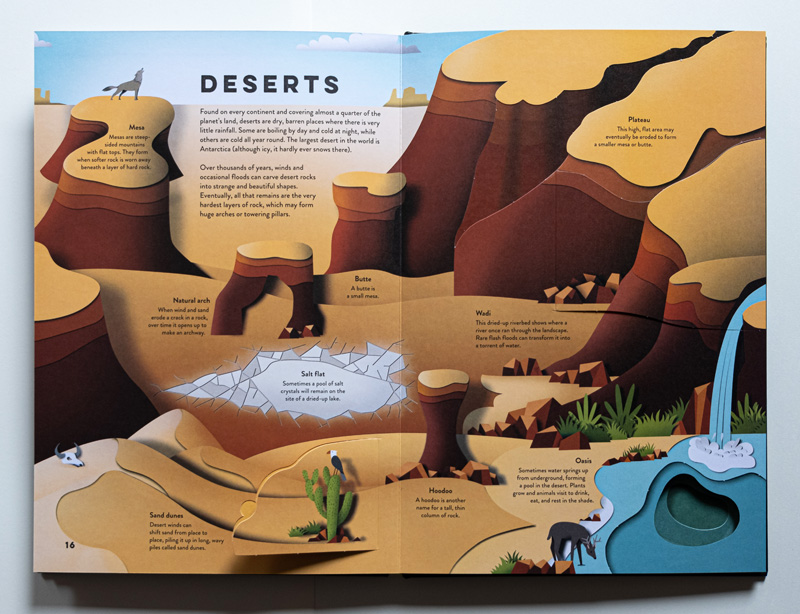
 One of the standard ways that publishers promote their new books is through online or print reviews that are widely read. Reviews like those here at WritersRumpus.
One of the standard ways that publishers promote their new books is through online or print reviews that are widely read. Reviews like those here at WritersRumpus.
You might wonder how there can be reviews of books before the book is actually available for purchase. Standard practice is that publishers send gratis copies of new books to reviewers who are expected to write objective descriptions. Libraries and bookstores need these so they can choose what to buy. It is a system that has worked well over time. This is why I received copies of Jon Klassen’s Hat Box and Paper World: Planet Earth illustrated by Bomboland.

Imagine a child receiving this enticing boxed set. Furoshiki, the ancient Japanese art of wrapping gifts in beautiful, carefully folded fabrics comes to mind since the act of opening a well-designed package adds drama and an element of surprise. Similarly, the carefully made sturdy slipcase for Hat Box with its beveled edges and smooth creamy surface promise a treasure within.
On the front are three droll characters – a deer, a bear, and a turtle, each peering intently at the viewer. When the child turns the box around, there of course are the back views of each of the three. Already funny.
When the top of the box is tipped back, the recipient spies the title of the first book – I Want My Hat Back. He or she notices that there are more inside… and the thrill begins with sliding them out, then opening them to read.
 Jon Klassen’s Hat Box contains three of his beloved hat books: I want My Hat Back – a Theodore Seuss Geisel Honor Book, Caldecott Award winning This is Not My Hat, and We Found A Hat, a story in three parts about two turtles who found…well, you know.
Jon Klassen’s Hat Box contains three of his beloved hat books: I want My Hat Back – a Theodore Seuss Geisel Honor Book, Caldecott Award winning This is Not My Hat, and We Found A Hat, a story in three parts about two turtles who found…well, you know.


 This new boxed set adds import by association to the three stories. Each is a sparsely worded, yet nimble and meaningful story. Together they depict moral issues surrounding theft, blame, honesty, guilt, and retribution. The hats are all pivotal, showing the reader the characters’ personalities and the arcs of their behavior. The bear misses his hat, yet does not notice who is wearing it. Until he does, that is. The little fish thinks he can get away with his crime, but through a series of false assumptions on his part, justice wins out. Two turtles find a hat that looks good on each of them. They both want it. They are friends so it would not be fair if the hat went to only one of them. One forgets about the hat, but the other does not. Together these tales are a playbook of moral choices. The artwork often depicts something more than what the words say, so both have equal weight. That is why these classic picture books are award winners.
This new boxed set adds import by association to the three stories. Each is a sparsely worded, yet nimble and meaningful story. Together they depict moral issues surrounding theft, blame, honesty, guilt, and retribution. The hats are all pivotal, showing the reader the characters’ personalities and the arcs of their behavior. The bear misses his hat, yet does not notice who is wearing it. Until he does, that is. The little fish thinks he can get away with his crime, but through a series of false assumptions on his part, justice wins out. Two turtles find a hat that looks good on each of them. They both want it. They are friends so it would not be fair if the hat went to only one of them. One forgets about the hat, but the other does not. Together these tales are a playbook of moral choices. The artwork often depicts something more than what the words say, so both have equal weight. That is why these classic picture books are award winners.
By repackaging these three tales, Candlewick offers a fresh look at the enclosed books which were originally published in 2011, 2012, and 2016.The set becomes a reminder of how charming and effective these books are.

Acts of another sort of unfolding entice the reader to explore Paper World: Planet Earth. Colorfully illustrated in a paper collage style with multiple, smartly designed die cut layers and 30 flaps to lift, this exceptional novelty book is a textural view of what is above, on, and below the Earth’s surface. Each spread focuses on a major habitat–mountains, caves, deserts, coasts, the ocean floor–or natural phenomena like tectonic plates, volcanoes, rivers, weather, and storms. The visual layering of the cut paper and digital illustrations is the ideal medium for this ecological topic.
The interactivity of lifting the flaps to discover new information enlivens the text for younger children. On the Volcanoes and Deserts pages the before (lifting the flap) and after effects animate and dramatize the information. As one’s fingers scan the spreads in search of what might open, the layered die cuts become more obvious. This texture adds dimension to the narrative. Edges of land, rivers, or surging magma fall away and clouds advance or recede. Depth becomes tangible. Suddenly the reader can sense an oncoming storm and see both inside and outside of a tornado. Sometimes there is a surprise hiding under a flap. On the Deserts spread, a bird perched on a cactus on the front of a flap gives way to the image of a poisonous gila monster beneath.

 Of the thirty flaps there was only one whose cleverness escaped me. On the Glaciers page, the small flap under the “Advance and retreat” heading is subtle and abstracted enough as to not be effective.
Of the thirty flaps there was only one whose cleverness escaped me. On the Glaciers page, the small flap under the “Advance and retreat” heading is subtle and abstracted enough as to not be effective.


Using simple direct text, each spread dramatizes multiple concepts about the topic. Although I attended a marine biology course in college, here I learned a new word: guyot. “This is an underwater mountain with a flat top, worn away by erosion.” A clever comparison to the familiar helps describe the thinness of the Earth’s crust as like a postage stamp on a football. Some information is like fun facts–the largest desert in the world is Antarctica, the Mariana trench is 33,000 ft. deep and from Mauna Kea’s base on the sea floor to the top of its peak is also 33,000 feet. The factual aspect is significant, but what sets the book apart is the interactivity and texture.
This large format book was illustrated by Bomboland, a studio in Italy comprised of Maurizio Santucci and Elisa Cerri. The British edition of Paper World: Planet Earth says that it was written by Ruth Symons, who has done dozens of British children’s books. Her name is nowhere on the American edition. A bit of a mystery. Candlewick’s imprint Big Picture Press publishes “visually extraordinary non-fiction.” Which this book certainly is.
Many young people are hungry for information about this planet, which they know is under great stress. The publisher pegs this book as being for 8-12 year-olds, but due to its presentation, it could be ideal for some kids half that age. The more children who absorb books like this one, the better.
Photographs by Egils Zarins.


Dear Joyce,
I love collage as an art form, and the marriage of collage with picture book illustration is genius in my opinion! I also appreciate the packaging of the “Hat” trio. Thank you for sharing these beautiful books with your artistic perspective.
LikeLike
Laura, I agree with you about collage – it is so tactile and versatile. It is a bit ironic that the non-fiction is bright and colorful while Jon Klassen’s three picture books are illustrated with such muted palettes. Both are surprising in their own ways.
LikeLike
I have only read I Want My Hat Back, which I loved. I need to read all the rest of these. Thanks for the heads up.
LikeLike
Hello Rosi. These three books are like a mini course in what a perfect picture book is, so do read the other two. One of the things they have in common is the rigor of the text. Not one extra word, yet solid stories. And part of each tale is in the images.
LikeLike
Hi Angie. If you give these books to the children in your life, they will love you for it. And you will help enrich their understanding of the natural world, literature and moral choices. that makes the world a bit better place!
LikeLike
David, I agree with you on both points (obviously). Candlewick’s publishing choices are top notch, as these books illustrate.
LikeLike
The Hat books are simply the best! and the Earth book looks fantastic. Thanks for sharing.
LikeLike
These books are gorgeous. I love the art of the earth book and always enjoy lift the flap books.
LikeLike
Danielle, agreed. Although “Paper World: Planet Earth” is considered a “novelty” book, that is only because it has paper mechanics, not due to the content. It is a well done non-fiction book that simply takes advantage of the flaps to animate the message and involve the reader in a tactile way.
LikeLiked by 1 person
Wow! Beautiful! I know several readers who will love these books.
LikeLike